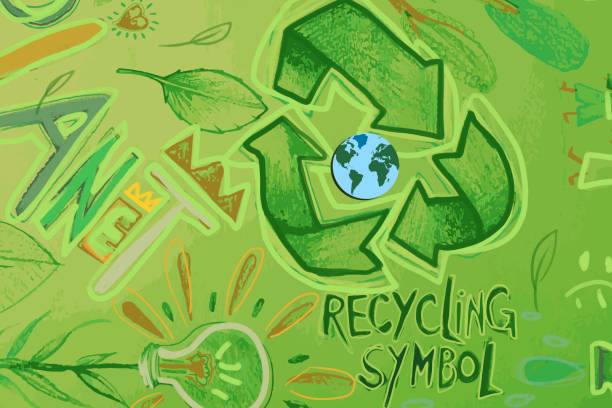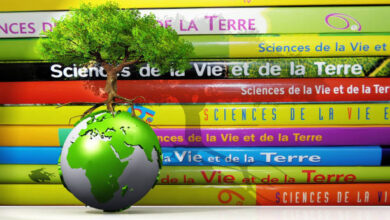
As the reality of climate change becomes increasingly apparent, we must recognize and harness the critical role that education plays in combatting this global challenge. It’s not just about informing our youth about the science of climate change, but empowering them to become agents of change. As such, integrating climate change education into our school systems and beyond has become more crucial than ever.
Addressing Climate Change by Education
Education plays an essential role in our collective fight against climate change, acting as a powerful catalyst for change that extends far beyond the confines of laboratories and international conferences. It serves a dual purpose in this context.
The first part of this role is to cultivate a well-informed populace who thoroughly understand the underpinnings of climate change, grasp the severity of its potential impacts and feel a sense of urgency to act. This is about more than just knowing the facts – it’s about comprehending the gravity of the situation and feeling driven to be a part of the solution.
The second, and equally important, part of education’s role is to nurture a generation of trailblazers, problem-solvers, and leaders. It’s about encouraging students to think critically and creatively, to ask the difficult questions, and to seek innovative solutions to the pressing problem of climate change. It’s about preparing them to navigate a world that is changing rapidly, and arming them with the tools to not only adapt to these changes, but to be a force for positive change themselves.
This is the transformative power of education in the context of climate change – shaping minds that not only understand the challenges we face, but are also equipped and inspired to overcome them. Through education, we can build a better, more sustainable future for us all.
Incorporating Climate Change Education into Curriculum
Weaving climate change education into the fabric of our curriculum goes beyond merely earmarking a chapter in the science syllabus. Rather, it invites us to cultivate an interdisciplinary understanding that permeates all subject areas.
- As students delve into the mechanisms and consequences of climate change during their science lessons, they are unraveling the scientific threads of this vast tapestry. In social studies, they can tackle the societal repercussions of climate change, as well as policy strategies for its mitigation, adding a crucial socio-political perspective.
- And the canvas of climate change can even be stretched into the realms of art and literature, allowing students to convey their feelings and thoughts about the changing world around them, fostering an empathetic engagement with the issue. By reframing how we educate about climate change, we nurture students who are not only knowledgeable but are also deeply connected to the world they are poised to inherit.
Promoting Sustainable Behaviors Through Education
Education is not just about filling minds with facts and figures. It’s about shaping behaviors, sparking action, and laying the foundation for a lifestyle grounded in sustainability. Imagine classrooms buzzing with lessons on waste reduction, energy conservation, and water mindfulness. These lessons delve into the intricate link between everyday actions and their environmental footprints, guiding students on how to tread more lightly on our planet.
But it shouldn’t stop there. Our schools should also walk the talk. This could mean incorporating recycling programs, advocating for zero waste lunches, or even shifting to solar power for school operations. Picture a school, not merely as a learning institution, but a living, breathing example of sustainable practices. It becomes a vibrant laboratory where lessons leap off the pages and students can see, firsthand, the application and impact of their learnings.
Then there’s the infectious nature of learning. Students are change agents, carrying their lessons back home, influencing family practices, and reshaping community norms. This ripple effect can foster a broader culture of sustainability, which transcends the school and resonates within the entire community.
Through education, we can seed sustainable behaviors that grow into lifelong habits, transforming our students into eco-conscious citizens of tomorrow.
Harnessing the Power of Student Activism
In the arena of climate change, we are witnessing a surge of student activism that is reshaping the dynamics of social change. The youth of today are not simply recipients of knowledge but dynamic changemakers, their voices resonating with an urgency that demands attention. Schools have an opportunity to tap into this spirited activism, transforming it into a potent force for experiential learning and societal transformation.
Consider the establishment of clubs or societies dedicated to understanding and addressing climate change. These provide students with an opportunity to actively participate in the climate conversation, bringing their lessons to life beyond textbooks and classroom discussions. Organizing events such as climate strikes, clean-up drives, or awareness campaigns allow students to apply their learning in real-world contexts.
In doing so, we aren’t merely giving students a platform to air their views. We are equipping them with the tools to take the helm of change. They learn about the intricacies of collective action, the complexities of policy advocacy, and the power of their voices in shaping societal norms. This active involvement cultivates a deep-rooted sense of responsibility and ownership, transforming them from observers to active participants in their future.
By engaging with student activism, schools also foster a culture of democratic dialogue, fostering respect for differing views and the value of negotiation. Students learn that change is rarely instantaneous but requires consistent, concerted efforts. This realization, paired with their passion for the planet, fuels a tenacity that will see them through the challenges of climate change.
Student activism is not just a testament to their passion for the planet; it’s an indication of their capacity for action. By harnessing this activism, schools can amplify their voices, while nurturing a generation that doesn’t just understand climate change but actively fights it.

Encouraging Climate Change Education Outside of Schools
Climate change education shouldn’t be confined to classroom instruction alone. It’s a collective effort that should permeate our homes, neighborhoods, and media channels, shaping a more informed and responsive society. At home, parents can spark dialogues around the dinner table, discussing the realities of climate change and exploring ways to combat it. How about considering a family project to reduce household waste or plant a home garden?
Within our communities, we can weave the narrative of climate change into public forums, neighborhood gatherings, or local events. Organizing clean-up drives, tree planting activities, or energy-saving initiatives can reinforce the lessons taught in schools and promote a community-wide culture of sustainability.
Media, with its far-reaching influence, can play a pivotal role in expanding climate change education. Documentaries, news features, and children’s programming can offer engaging insights into the science of climate change and its implications. They can highlight success stories of individuals and communities taking climate action, fostering a sense of optimism and possibility.
In essence, climate change education extends beyond the school gates. It’s an ongoing, inclusive conversation that calls for active engagement from all sectors of society. By integrating climate education into our daily routines and dialogues, we can cultivate a deeper understanding of climate change and inspire positive action. The fight against climate change isn’t just for scientists or policymakers, it’s a challenge for us all, and it starts with education.
Facing the Challenges in Climate Change Education
Indeed, integrating climate change education into our curriculum is not without its share of obstacles. The intricacy of the topic, with its scientific complexity and the interconnected web of societal impacts, can prove daunting. It is a delicate task of conveying this complexity without overwhelming our students or oversimplifying the issue.
Another challenge lies in the resource department. Climate change is a rapidly evolving field, with new scientific discoveries and policy changes emerging frequently. Keeping educational resources updated, accurate, and accessible requires a diligent effort from all involved. However, out-of-date textbooks and lack of digital resources can often be roadblocks in providing the most current knowledge on climate change.
The situation is further complicated by the need for teacher training. Educators are pivotal in shaping students’ understanding of climate change, but they themselves might lack adequate training or feel unprepared to teach such a complex subject. Professional development programs focusing on climate change education are thus essential to equip our teachers with the right tools and confidence.
They call for a coordinated effort among educators, scientists, policymakers, and the students themselves. Each has a unique role in the collective mission of enhancing climate change education, making it more effective, inclusive, and inspiring. It’s about transforming these challenges into opportunities for growth and innovation in the field of climate change education.
The Future of Climate Change Education
As we cast our eyes towards the horizon, it’s clear that climate change education must continually evolve and innovate. It must stay nimble, constantly adapting to keep in step with the most recent scientific breakthroughs, societal shifts, and the pulse of technology. More importantly, it must equip our students with not just the theoretical understanding but also the practical skills and heartfelt values required to forge a sustainable path forward.
- Imagine an education that fosters a sense of curiosity and wonder about the natural world, while also instilling a deep understanding of our interconnectedness with it. Picture a classroom where climate science is brought to life through the use of immersive technologies, making learning a tangible, experiential journey. Envision an educational culture that values critical thinking and creativity, inspiring students to ask challenging questions, seek bold solutions, and become proactive stewards of their environment.
- Moving forward, let’s consider the cultivation of empathy and compassion as fundamental elements of climate change education. After all, the repercussions of climate change will be felt most profoundly by those in marginalized communities and future generations. As we educate our students about climate change, we also need to encourage them to reflect on issues of justice and equity, fostering a generation that champions sustainable development for all, not just a privileged few.






Its like you read my mind You appear to know a lot about this like you wrote the book in it or something I think that you could do with some pics to drive the message home a little bit but instead of that this is fantastic blog An excellent read I will certainly be back
I do agree with all the ideas you have introduced on your post They are very convincing and will definitely work Still the posts are very short for newbies May just you please prolong them a little from subsequent time Thank you for the post
k8 カジノ 入金
読んでいてとても楽しかったです。また訪れます。
geinoutime.com
옛 환관 삼보가 남긴 세계지도.세 제자 Lunjinrushan도 유난히 진지해 보였습니다.